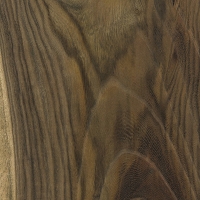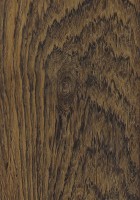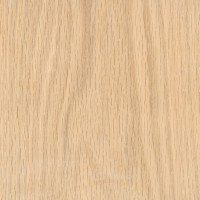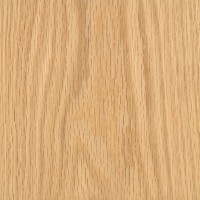| Common Name(s): Guatemalan Mora, Mora
Scientific Name: Maclura tinctoria (syn. Morus tinctoria) Distribution: Guatemala Tree Size: 60-80 ft (18-25 m) tall, 2-3 ft (.6-1.0 m) trunk diameter Average Dried Weight: 57 lbs/ft3 (910 kg/m3) Specific Gravity (Basic, 12% MC): .75, .91 Janka Hardness: 2,380 lbf (10,590 N) Modulus of Rupture: 19,560 lbf/in2 (134.9 MPa) Elastic Modulus: 2,160,000 lbf/in2 (14.90 GPa) Crushing Strength: 11,710 lbf/in2 (80.8 MPa) Shrinkage: Radial: 3.4%, Tangential: 5.4%, Volumetric: 7.8%, T/R Ratio: 1.6 |
Color/Appearance: This Guatemalan variant of Argentine Osage Orange is sometimes called “Guatemalan Tigerwood” or “Mora” (not to be confused with Mora excelsa, which also goes by the common name of Mora) which is light to medium reddish brown, with streaks of lighter and darker material.
Grain/Texture: Has a straight to interlocked grain, with a fine to medium texture.
Endgrain: Diffuse-porous; medium pores in no specific arrangement; solitary, and commonly in radial multiples of 2-3; tyloses and other deposits common; growth rings may be distinct due to seemingly marginal parenchyma; rays visible without lens; parenchyma banded, paratracheal parenchyma vasicentric, aliform (lozenge and winged), and confluent.
Rot Resistance: Guatemalan Mora is very durable and has good weathering characteristics; it is also resistant to termites.
Workability: Working this wood can be difficult due to its hardness and density, though it is reported to have little dulling effect on cutting edges. It turns well, and also takes stains, glues and finishes well.
Odor: No characteristic odor.
Allergies/Toxicity: Sap has been reported to cause dermatitis. See the articles Wood Allergies and Toxicity and Wood Dust Safety for more information.
Pricing/Availability: Guatemalan Mora should be moderately priced for an imported hardwood.
Sustainability: This wood species is not listed in the CITES Appendices or on the IUCN Red List of Threatened Species.
Common Uses: Heavy construction (within the tree’s natural range), flooring, furniture, turnings, and other small specialty wood items.
Comments: Perhaps one of the most confusing names in modern hardwood commerce is the selling of a Guatemalan variety of Osage Orange—which looks vastly different than the traditional yellow color—that’s being marketed as “Mora.” Unfortunately, the common name Mora has traditionally been used for an unrelated wood found in northern South America (not found in Guatemala) known by the scientific name Mora excelsa.


































































